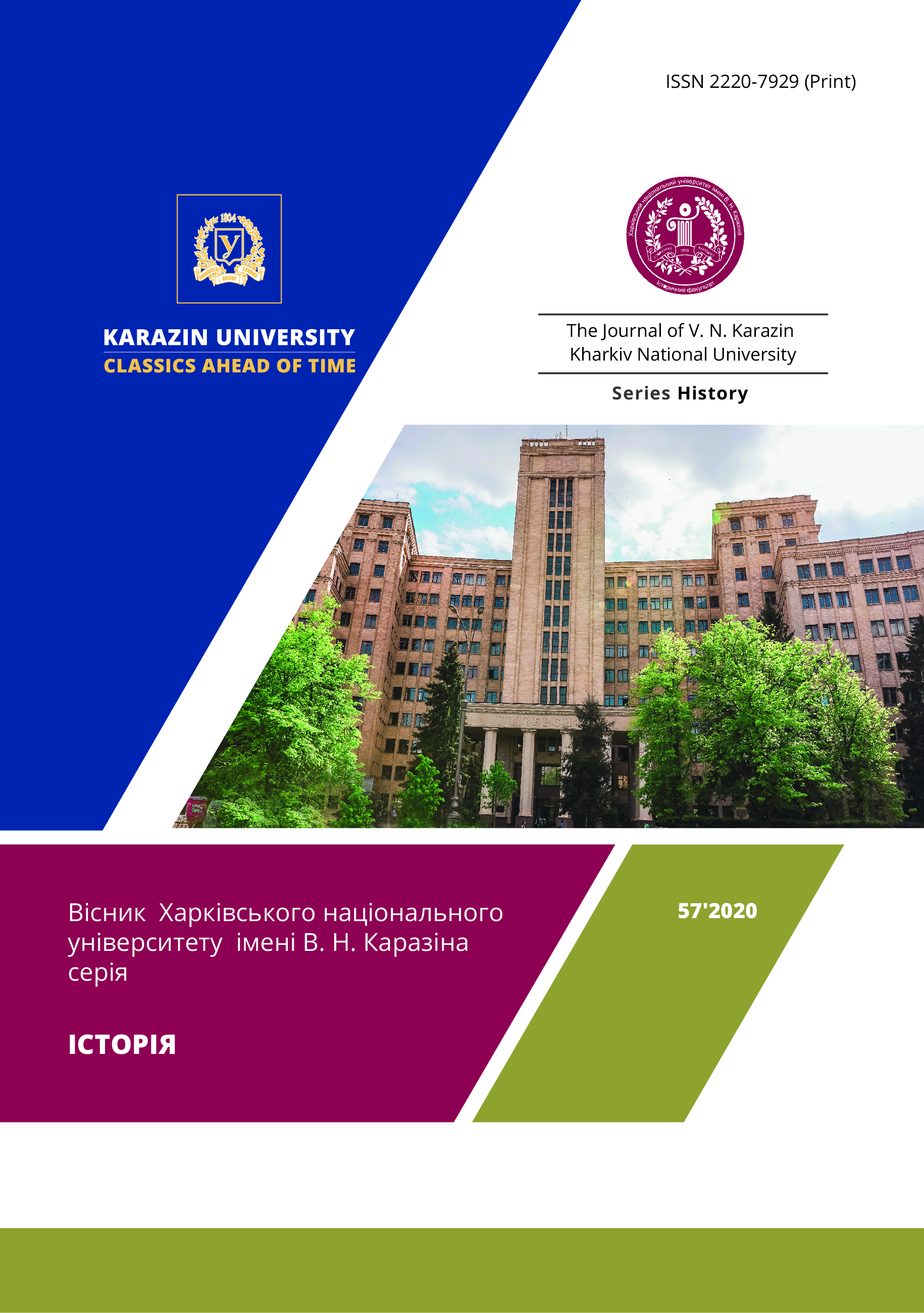Mass Art or Art for the Masses: Street art in Kharkiv
Abstract
The article is devoted to one of the directions of the art of post-modernism - street art, which became widespread in Kharkiv at the turn of the 20th - 21st centuries. This type of modern art quickly won the sympathy of city residents and found its supporters in a large group of young innovative artists (both professionals and amateurs, both individual authors and creative teams) who work in this style. The creation of murals quickly transformed from spontaneous work to managed by the city government, which supported this kind of change in urban decor. Kharkiv street art has come a long way in its formation: from the mysterious inscriptions of Oleg Mitasov to Ukraine’s largest mural depiction of the poet Taras Shevchenko. The article highlights the procedure for creating a mural image. At the turn of the XX-XXI centuries the first mural portraits in Kharkiv were created spontaneously, outside of any general urban development plan. In recent years, first, the city architectural department, and then the Department of Culture of the Kharkiv City Council, took control of such works and such activities became more focused and planned. Artists come to the Department of Urban Planning and Architecture of the Kharkiv City Council with the initiative to create a mural on a particular house and provide its sketch. That is, the artists themselves choose the image that will be created. In order for such an image to be created, it is first necessary to coordinate this issue with the owners of the house on which the image is planned to be placed. At the same time, a problem arises as to who will support the drawing after its creation, because the money for its possible restoration by the city budget is not provided, and some of the murals already need updating. The most characteristic examples of this art in Kharkiv are considered, several of its types are distinguished. It is concluded that, in general, street art positively influenced the appearance of the city, which became more vivid and filled with new meanings and content. It is noted that murals and graffiti perform not only a decorative, but also a cultural and educational role. The main characters of Kharkiv murals are natives of the city and prominent figures who have made a significant contribution to world art, science and literature.
Downloads
References
Бусел, В. Т. (укл.). Великий тлумачний словник сучасної української мови. Київ, Ірпінь, 2005.
Бычек, А., Чернета, Е. Хроники одной стены: в Харькове разгорелась «война» из-за закрашеного стрит-арта Гамлета. Available at:
Демченко, В. В., Горда, О. В., Ткач, З. В. Особливості топології графіті як історичних написів. Available at:
Энциклопедический словарь живописи. Западная живопись от средних веков до наших дней. Москва, 1997.
Граффити. В: Большой энциклопедический словарь. Искусство. Москва, 2001, c. 134.
Голуб, О. Є. Графіті. У: Енциклопедія Сучасної України, т. 6. Київ, 2006, с. 379.
Ивашкевич, В. В Харькове открылся фестиваль «Mural Fest». Городские многоэтажки разрисуют уличные художники из Европы. Available at:
Kailas-V. Наша цель – трансформация окружающего пространства. Харьковские известия. 17 августа, 2016. Available at:
Клепнева, В. А. Стрит-арт: искусство или вандализм? 2015. Available at:
Кудряшов, И. Это что за художество? Стрит-арт и искусство. Available at:
Лигостаева, С. Гамлет Зиньковский, художник, мастер стрит-арт. УКРИНФОРМ. 27 октября, 2018. Available at:
«Митасов-ленд»: двор в котором жил Олег Митасов. Available at:
О муралах. Available at:
Павлова, О. Г., Проценко, М. В. Тарас Шевченко і Харківський університет: до 200-річчя Кобзаря. Харків, 2014.
Соколинская, А. Стрит-арт – между хулиганством и искусством. День. 17 июля, 2013. Available at:
У Харкові пошкодили мурал Героям Крут. УКРІНФОРМ. 10 травня, 2017. Available at:
Copyright (c) 2020 Yankul O. M.

This work is licensed under a Creative Commons Attribution 4.0 International License.
Authors who publish with this journal agree to the following terms:
- Authors retain copyright and grant the journal right of first publication with the work simultaneously licensed under a Creative Commons Attribution License that allows others to share the work with an acknowledgement of the work's authorship and initial publication in this journal.
- Authors are able to enter into separate, additional contractual arrangements for the non-exclusive distribution of the journal's published version of the work (e.g., post it to an institutional repository or publish it in a book), with an acknowledgement of its initial publication in this journal.
- Authors are permitted and encouraged to post their work online (e.g., in institutional repositories or on their website) prior to and during the submission process, as it can lead to productive exchanges, as well as earlier and greater citation of published work (See The Effect of Open Access).




